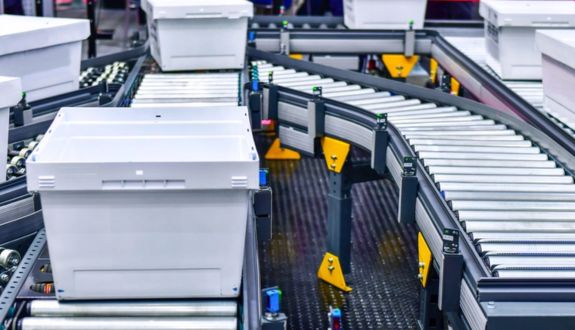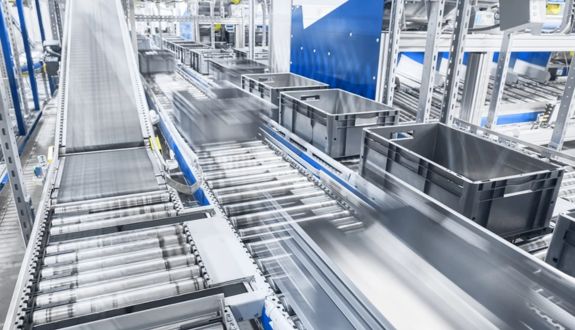Conveyor and sortation management involves monitoring and enabling the movement of totes, cartons, or perhaps even product to various destinations. Management of a conveyor system includes attention to the physical conveyor (i.e., rollers, belts, diverts, transfers, etc.), as well as to the controls software and programming that runs the conveyor components.
This conveyor system controls when and where a carton or tote is moved, and it does so using the instructions given to it by a warehouse control system (WCS). Management of a sortation system involves knowing where a particular carton or box is supposed to be delivered to within the distribution center. For example, a large eCommerce distribution center may have dozens of different shipping lanes. The cartons have to be sorted appropriately in advance so they get to their proper destination.
In some cases, sortation also involves coordinating the different component parts of an order. For instance, if a customer ordered pants, a shirt, and a pair of boots, it is most cost effective for all these items to be sorted into a particular conveyor lane and then packaged together for shipping.
The most effective conveyor and sortation solutions optimize both speed and accuracy. In addition, they are designed to handle current throughput, as well as expected growth. For example, if a warehouse and distribution center is expected to last 10 years, then its conveyor solution should be sized to handle the tenth year of growth at the heaviest hour or period of time during a peak operational shift.
Communication and control of conveyor and sortation equipment
A conveyor control system uses programmable logic controllers (PLC) as the basis for the logic that routes totes and cartons along a conveyor. PLCs can perform simple tasks, such as reading a barcode, but they are not able to assign context to these tasks, i.e., they cannot distinguish between a barcode for inbound materials from a barcode on an outbound carton destined for a customer.
To make that kind of distinction, the PLC system must communicate with higher level software, such as a warehouse control system (WCS). This communication must happen in real-time so that the PLC can be told what to do and the entire system can work in harmony. The main function of the WCS is to take the business objectives provided from a WMS and turn those into physical actualities using the conveyor control system.

For optimal conveyor and sortation management, choose a warehouse management system (WMS) that has its own integrated warehouse control system (WCS). These two systems must communicate seamlessly back and forth, and in order for that to happen, the WCS cannot be a third-party, bolted-on solution.
Instead, the WMS and WCS must function in real time as one unit. This also rules out cloud-based WCS as an option typically. A cloud-based WCS can introduce latency, and any lag in communication will slow down or halt real-time conveyors and the PLC control systems.
